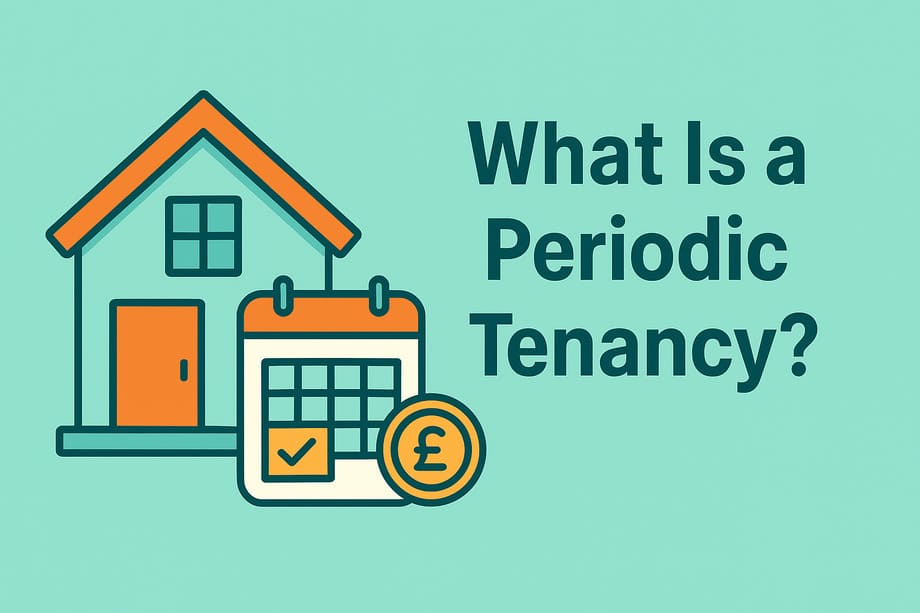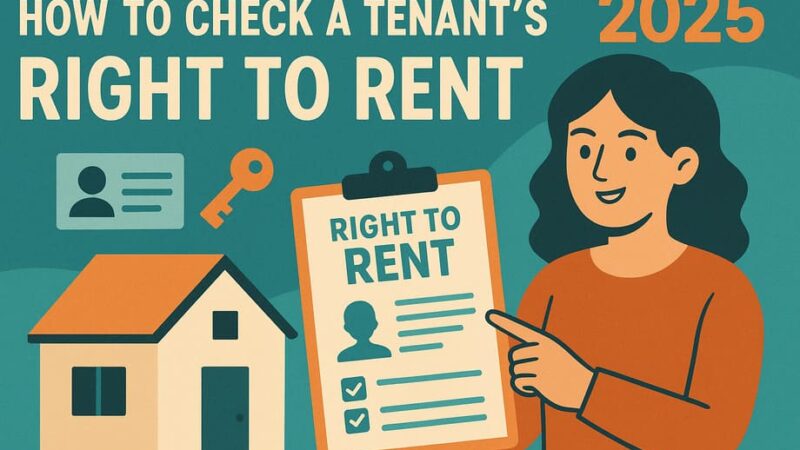What Is a Periodic Tenancy? Risks & Rewards

With several types of tenancies out there, the variations can get confusing for new tenants and landlords. So, what is a periodic tenancy?
Periodic tenancies can offer great benefits, including increased flexibility and less paperwork. However, they aren’t without their drawbacks.
That’s why we’ve created this guide on the risks and rewards of periodic tenancies, to help you make an informed decision before drawing up a contract.
What is a Periodic Tenancy Agreement?
A periodic tenancy is a tenancy that runs for a certain period of time, most commonly month to month. Periodic tenancies can also run on a week to week or quarterly basis, although this is less common.
Unlike fixed term tenancies, periodic tenancies work as a rolling contract which can be terminated by landlord or tenant by giving notice.
Periodic tenancy agreements run from month-to-month or sometimes week-to-week, depending on when the rent is paid. For example, if rent is paid monthly, then the tenants are on a monthly periodic agreement.
Simply put, either party can terminate a periodic tenancy agreement relatively quickly. Conversely, in a fixed-term tenancy, the tenant or landlord would typically need to wait until the end of the agreed-upon term before any tenancy changes could be made.
Types of Tenancy Agreements
Tenancies can come in all shapes and sizes, depending on the terms and conditions of the agreement. However, here are the most common types of tenancies you’re likely to come across;
Assured Shorthold Tenancy
Assured shorthold tenancies are the most common and apply to most private rentals with a tenancy date starting after 15 January 1989. Most assured shorthold tenancies begin with a fixed period of 6 or 12 months.
Non-Assured Shorthold Tenancy
If your rental property demands less than £250 or more than £100,000 in rent per year or it is used as a holiday home, it won’t be eligible for an assured tenancy. This means you don’t have to enter the tenant’s deposit into a protection scheme or serve a section 21 notice to evict tenants.
Assured Tenancy
It is unlikely you’ll need an assured tenancy these days unless you are a housing association. This type of tenancy gives the tenant longer-term stability.
Excluded Tenancy
Sometimes referred to as a license, excluded tenancies are for tenants who lodge with their landlord and share communal areas.
Regulated Tenancy
If a tenancy started before 15 January 1989 it may be a regulated tenancy. The difference being that tenants have enhanced rights when it comes to eviction and ‘fair rent’.
Company Let
When renting to companies, different rules apply in terms of deposit protection and eviction notices.
Fixed Term Tenancy
A fixed term tenancy lasts for an agreed set of time, depending on what is set out in the tenancy agreement. Usually this will be 12 months.
Short-Term Fixed Tenancy
A short-term fixed tenancy lasts for 90 days or less.
Periodic Tenancy
A periodic tenancy works on a rolling basis with no fixed end date. E.g. month by month.
What is a Statutory Periodic Tenancy?
A statutory periodic tenancy occurs when an assured shorthold tenancy comes to the end of its fixed term and the tenant stays at the property without renewing the contract. If the tenant continues to pay rent and it is accepted by the landlord, the tenancy will continue on a periodic, rolling basis.
This transition from fixed term assured shorthold tenancy to statutory periodic tenancy is automatic.
Many tenancy agreements do not contain any clause specifying how the tenancy will continue after the end of the fixed term at all.
For these type of tenancies, Section 5 of the Housing Act 1988 steps in to create a brand new tenancy agreement known as a statutory periodic tenancy.
This tenancy will run from month to month, week to week, etc based on the last rent paid. For example, if the tenant pays monthly in the fixed term, then the periodic tenancy will run from month to month.
The key point to understand about a statutory periodic tenancy is that it is a brand new tenancy that is separate from the original fixed term. This is very important for council tax, deposits and the service of documents.
What is a Contractual Periodic Tenancy?
A contractual periodic tenancy differs in that it is agreed in the tenancy contract as opposed to automatically transitioning from a fixed term into a periodic tenancy. This can either be agreed upon at the start of the tenancy or shortly before the fixed term contract expires.
At its simplest, a contractual periodic tenancy means that the tenancy runs from month to month, week to week, etc, agreed as part of the tenancy agreement. This will mean that a clause will be present in the tenancy agreement saying that periodic tenancy will follow on from the fixed term.
Typically, these tenancies are written as continuations of the fixed term. They will use phrases like ‘continue on as a periodic tenancy’ or ‘carry on from month to month after the end of the fixed term’. In these cases, the fixed term and the periodic portion are all part of the same tenancy, which is very important for council tax purposes.
It is also possible to enter into a periodic tenancy from the outset by setting the initial term as one month or week.
A contractual periodic tenancy is when you and your tenants have agreed that the tenancy will become a periodic tenancy once the fixed-term tenancy ends.
How Does a Periodic Tenancy Work?
While a fixed term tenancy lasts for an agreed set of time, a periodic tenancy works on a rolling basis, from month to month or week to week. It doesn’t end until one party gives notice.
In a periodic tenancy, the period depends on when the rent is paid by the tenant. So, in a monthly period tenancy the tenant would pay rent each month.
Shorthold tenancies become periodic tenancies after the fixed term agreement expires and if there is no new contract drawn up with the remaining tenants. The assured shorthold tenancy will automatically become a periodic tenancy as long as the tenants do not change, and they are happy to retain the same contract. The same conditions will apply and there is no further action needed by the landlord or tenant.
How do I spot the difference?
The first thing to do is read your tenancy agreement to see if a clause detailing the periodic tenancy exists. If one does, then it will normally be a contractual periodic tenancy.
If no clause exists, or the clause specifically states that the tenancy will be a statutory periodic tenancy or arise under Section 5 of the Housing Act 1988, then it will be a statutory periodic tenancy.
Why are they used?
For some landlords and tenants, periodic tenancies are ideal. Not only do both parties have a clear and straightforward process for ending the tenancy, but they can also avoid the hassle of renewing the lease as periodic tenancies automatically renew.
- For tenants, there is greater flexibility to move out with relatively short notice, which could be a necessity for certain groups, such as students and young professionals.
- For landlords, the same level of flexibility applies, allowing for regular rent reviews and an easier process should they need to regain possession of the property.
Ending a Periodic Tenancy
To end a periodic tenancy, there are several legal processes that can take place;
- Both landlord and tenant mutually agree to end the tenancy
- The landlord decides to evict the tenant
- The tenant gives notice
- The landlord gives notice
A tenancy can end by mutual agreement or eviction (if there are grounds to do so). Regardless of whether it is a statutory or contractual periodic tenancy, it should be ended by the proper legal means. Landlords must follow the rules of the Housing Act 1988 or risk invalidating the process.
Periodic Tenancy Notice: Tenants
To end a periodic tenancy, tenants will need to give the right amount of notice depending on the terms stated in the tenancy agreement. They also need to ensure it ends on the right day. For example, if a monthly periodic tenancy began on 1st January it will need to end on the last or the 1st day of the month. From this date, they will no longer be liable for rent payments.
The tenant can give periodic tenancy notice (usually one month or 28 days if the rent is weekly). It should be in writing.
Statutory Periodic Tenancy Notice
If it is a statutory periodic tenancy, tenants must give at least 1 months’ notice for a monthly contract or at least 4 weeks’ notice for a weekly contract. The notice must end on the first or last day of the tenancy period.
Periodic Tenancy Notice Period: Landlords
Landlords must give tenants a written ‘notice to quit’ which must end on the last day of the rental period, give the minimum notice period and include legal information.
If the landlord gives notice on a periodic tenancy, they should give the tenant two months’ written notice in advance.
For statutory periodic tenancies, it is also possible for landlords to issue a section 21 notice as long as the landlord gives the tenant at least two months’ notice and the last day is the last day of the tenancy period. If the tenant does not move out on this date, landlords have the right to request a court order to regain possession.
Benefits of a Periodic Tenancy for Landlords
A periodic tenancy can have wide-ranging benefits for both landlord and tenant, including;
- Increased flexibility. If you suddenly need to regain possession of your property, a periodic tenancy speeds up this process as you don’t have to wait until the end of a fixed period.
- Attracting tenants. For some tenants, this flexibility is a bonus. If your tenant moves a lot for work or often needs to relocate suddenly, a periodic tenancy becomes appealing.
- Reduced letting agency fees. Periodic tenancies can dispel the need for renewals and the administration costs that come with them.
- Less paperwork. There is no need to draw up another agreement since the tenancy agreement still stands (in the case of a contractual periodic tenancy), and in the statutory periodic tenancy, it becomes automatic.
- Increase the rent. If for any reason you need to increase the rent, this is made a lot easier by periodic tenancies. Revisions to rent payments can be made much more quickly when operating on a month by month basis. You can usually increase the rent once a year by giving your tenants the correct notice period once the rent has been paid.
- It’s flexible. If you want to ask your tenants to leave, you can serve a Section 21 notice right away (rather than waiting for the fixed-term to end). It’s also faster to evict a bad tenant than having to serve a Section 8 Eviction notice for a fixed tenancy.
If you are having issues with a particular tenant, a periodic tenancy may be in your favour as you are better able to evict problem tenants as a last resort.
Risks of Periodic Tenancies for Landlords
With these advantages also come risks. If you’re thinking of entering into a periodic tenancy, watch out for the following potential dangers;
- Short-term tenants. Naturally, periodic tenancies are more likely to attract tenants looking for shorter, more transient leases. Just as you, as the landlord, can quickly get rid of bad tenants, your good tenants can move out just as quickly. If it’s stability you’re after, you may want to think twice.
- More fees. Similarly, shorter term tenants can cost more in terms of marketing and vetting potential new tenants to replace them. A quicker turnover of tenants means having to spend more money on flat cleaning, marketing and tenant referencing checks. It also means being on the ball time-wise as a month isn’t a long time to organise all this.
- More void periods. With 1 month or less notice periods, you don’t have a long turnaround time if a tenant decides to move out unexpectedly. You will need to have end of tenancy cleaning and maintenance processes finely tuned so as not to lose out. It’s not always the case that your flat will be empty more often than with a fixed tenancy, but certainly, the risk is higher since you may have a higher turnover of tenants.
- Council tax. If your tenant moves out during a ‘notice to quit’ period, you may be liable for paying council tax for the property. To avoid this situation, make sure you have a contractual periodic tenancy agreement in place to ensure this remains the tenant’s responsibility. Under a statutory periodic tenancy, if you give a tenant a Notice to Quit and they move out right away, then you could be left paying the council tax.
- Updating Agreements. If a periodic tenancy is continual for several years, then the tenancy agreement may not always be in keeping with the updated legislation.
Key things to consider
There are a number of significant differences in how various laws apply to the two different types of periodic tenancy types. This section will outline the main differences so you can plan accordingly.
Council Tax liability during a periodic tenancy
If the tenancy is for the whole of a house or flat rather than a room, and it is for a fixed term of at least 6 months, then the tenant will be liable for the council tax until the end of that term even if they move out without giving notice.
If at the end of this fixed term, the tenancy continues as a contractual periodic tenancy, then the same rules apply. The tenant(s) will be liable for the council tax until the end of their notice period even if they leave early in their notice.
As statutory periodic tenancies are brand new tenancies there is no 6 month fixed term, therefore the tenants are only liable for council tax while they are living in the property. If a tenant abandons the property without notice inside the statutory periodic tenancy then landlords may find themselves having to pay to regain possession, while also paying the council tax.
What About The Deposit?
If the tenant’s deposit is held in one of the approved schemes, then it is protected until the tenancy ends – regardless of whether it is fixed or periodic. That’s because when a tenancy becomes periodic it continues. However, it is always worth checking since rules and tenancy deposit providers can change over time.
However, if the deposit has not been protected correctly the law interacts differently with each.
For contractual periodic tenancies, the landlord will only be liable for one to three times the deposit as a penalty. This is because there is only one tenancy in which they are in breach of; the combined fixed term and periodic tenancy. For statutory periodic tenancies, there are two tenancies so the landlord can face a penalty of 2-6 times the deposit as a penalty for non-compliance instead.
Increasing the rent in a periodic tenancy
The rules on rent increases work very differently for the two types of periodic tenancy.
For contractual periodic tenancies you may insert a rent review clause into your agreement. Provided this is a fair term this increase will be binding on the tenant and the landlord. The landlord can then follow the terms of the clause to increase the rent.
Where no rent review clause exists in the tenancy a landlord may use the prescribed section 13 form to increase the rent but not until the fixed term is over and 12 months have elapsed since the tenant moved in.
For tenants on statutory periodic tenancies, landlords may not create a rent review clause as the fixed term and statutory periodic tenancy are separate. They must use the Section 13 form instead. However, unlike the contractual periodic tenancy this can be served as soon as the fixed term is over, even if only 6 months have passed since the tenants moved in.
Other types of tenancy agreements
Assured Shorthold Tenancy (AST) is the most common tenancy that landlords or letting agents provide. It gives the tenant the legal right to stay in a property for a certain initial period, usually 12 months. However, there are several other options that exists, and may be suited to certain tenants and situations:
Non-Assured Shorthold Tenancy is used when an AST can’t be due to unavoidable circumstances, including the tenant having another main home, where the total rent is £250 or less per year, or if the landlord lives in the property with their tenants but doesn’t share any of the amenities.
Assured Tenancy is commonly used for housing association tenants but can also be used for private tenants. It is an agreement that allows the tenant to stay in the property for the rest of their life, and it can only be ended if the tenant decides to vacate the property or if they are evicted for a particular reason.
Excluded Tenancy is used when a landlord has a subtenant who lives in the same property, and the communal living space is shared. The tenant has exclusive possession of the area (usually bedroom) for which they pay their rent.
Regulated Tenancy, also known as a protected tenancy or rent act tenancy, is a long-term agreement between a private landlord and a tenant. Before 15th January 1989, in England and Wales, they were the default type of tenancy.
Company Let is when a limited company rents out residential accommodation for its staff or directors to live in as tenants.
Short-Term Fixed Tenancy has a start and expiry date that is set, usually for a period of 90 days or less.
Periodic Tenancies: Good Idea?
Periodic tenancies can be a good idea as they offer increased flexibility for both landlord and tenant and can reduce the number of administrative tasks needed throughout a tenancy.
Many landlords believe so. A periodic tenancy running on from a fixed tenancy is the most popular form of rental agreement these days.
Both parties – landlord and tenants – are often keen on flexibility. Landlords can move tenants out quickly if they need their property for something else, but it works both ways. That means tenants who come and go can leave you with a lot of expense and admin work creating new leases, carrying out inventory checks, etc.
However, to protect your investment, we recommend;
- Always drawing up a contractual periodic tenancy agreement. This way you have all the agreed terms in writing and won’t be liable for council tax payments if your tenant moves out unexpectedly.
- Getting your property marketing up to scratch to attract new tenants and avoid extended void periods.
- Making sure you have all the processes in place for a speedy turnaround to avoid any losses. This includes; cleaning and maintenance, inventory management and reports, right to rent checks, smoke and CO checks and installation, check-in and check-out.
The future of periodic tenancies
The upcoming Renter’s Rights Bill is set to introduce major reforms to the private rented sector. The bill is expected to be passed in 2025, and it replaces the previous government’s Renter’s Reform Bill.
One of the significant changes included in the bill is bringing an end to ASTs and replacing them with periodic tenancies. Instead of agreeing to a fixed rental term, tenants will be put on a rolling contract, which they can end with two months’ notice. This new tenancy rule will apply to nearly all tenancies, providing tenants with more freedom to move out, should they want to.
Landlords will have to follow Section 8 rules to end the tenancy, as the plans are to abolish Section 21 notices completely.
Last Updated on August 26, 2025 by James Cartwright







